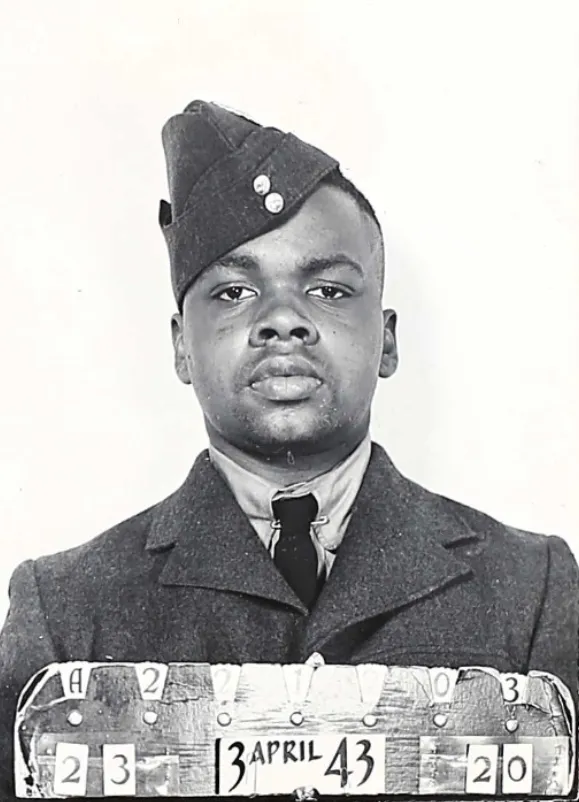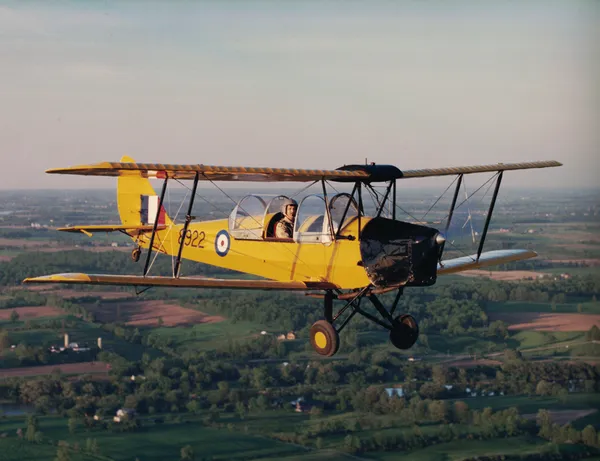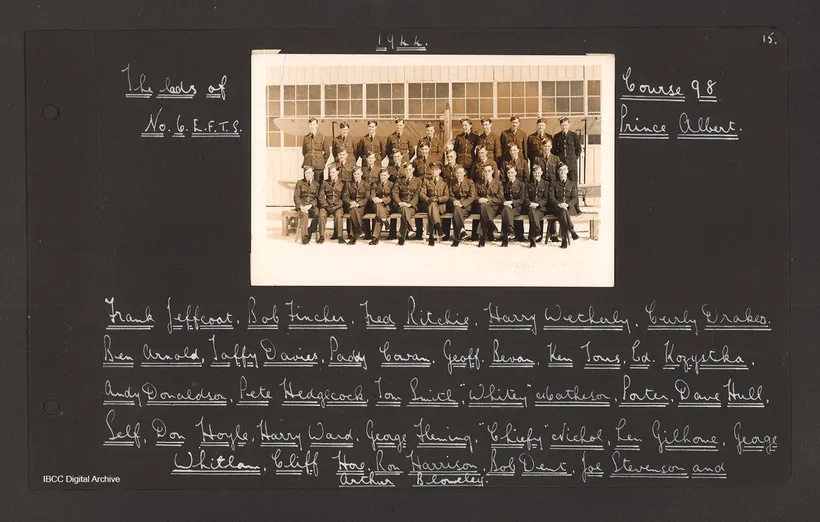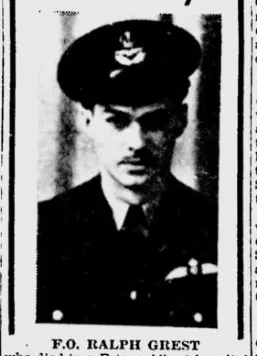Henderson, Edward Guyon (Leading Aircraftman)
Killed in Flying Accident 1943-November-24


Birth Date: 1924-March-24
Born: Windsor Ontario
Parents: Son of Roland P. Henderson and Euphemia Henderson, of Windsor, Ontario.
Spouse:
Home: Windsor, Ontario
Enlistment:
Enlistment Date: unkown date
Service
RCAF
Unit
6 EFTS- Elementary Flying Training School
Base
Prince Albert, Saskatchewan, Canada
Rank
Leading Aircraftman
Position
Pilot
Service Numbers
R/221203
Home
This incident involved multiple aircraft:
- Moth, Tiger I Serial: 1142
- Moth, Tiger I Serial: 5944
All the above aircraft in the above list are referenced in this report.
Crew or Other Personnel
Moth, Tiger 1142
Accident Card - de Havilland Moth, Tiger I serial:1142
This accident involved 2 aircraft on 1943-November-24. They are: Tiger Moth s/n 1142, Tiger Moth s/n 5944.
This accident involved 4 people. Mclean PR, Grest RN, Butler JS, Henderson EG
This accident had 4 fatalities. Flying Officer Ralph Nicolaus Grest RCAF Killed in Flying Accident service no:J/23077 Moth, Tiger 1142, Leading Aircraftman Edward Guyon Henderson RCAF Killed in Flying Accident service no:R/221203 Moth, Tiger 1142,Flying Officer John Stanley Butler RCAF Killed in Flying Accident service no:J/23616 Moth, Tiger 5944, Leading Aircraftman Paul Roger McLean RCAF Killed in Flying Accident service no:R/251972 Moth, Tiger 5944
Moth, Tiger serial: 1142

The de Havilland DH.82 Tiger Moth is a 1930s British biplane designed by Geoffrey de Havilland and built by the de Havilland Aircraft Company. It was operated by the Royal Air Force (RAF) and many other operators as a primary trainer aircraft. In addition to the type's principal use for ab-initio training, the Second World War saw RAF Tiger Moths operating in other capacities, including maritime surveillance and defensive anti-invasion preparations; some aircraft were even outfitted to function as armed light bombers.
The Tiger Moth remained in service with the RAF until it was succeeded and replaced by the de Havilland Chipmunk during the early 1950s. Many of the military surplus aircraft subsequently entered into civil operation. Many nations have used the Tiger Moth in both military and civil applications, and it remains in widespread use as a recreational aircraft in several countries. It is still occasionally used as a primary training aircraft, particularly for those pilots wanting to gain experience before moving on to other tailwheel aircraft.
Overseas manufacturing of the type commenced in 1937, the first such overseas builder being de Havilland Canada at its facility in Downsview, Ontario. In addition to an initial batch of 25 Tiger Moths that were built for the Royal Canadian Air Force (RCAF), the Canadian firm began building fuselages which were exported to the UK for completion. Canadian-built Tiger Moths featured modifications to better suit the local climate, along with a reinforced tail wheel, hand-operated brakes (built by Bendix Corporation), shorter undercarriage radius rods and the legs of the main landing gear legs being raked forwards as a safeguard against tipping forwards during braking. In addition the cockpit had a large sliding canopy fitted along with exhaust-based heating; various alternative undercarriage arrangements were also offered. By the end of Canadian production, de Havilland Canada had manufactured a total of 1,548 of all versions. Wikipedia
Aircraft Images
Moth, Tiger 1142
Moth, Tiger I 1142
Ordered by USAAF as PT-24 42-1006; then to Lend-Lease as RAF FE142. Assigned to No. 2 Training Command (Manitoba and Saskatchewan) at time of crash.1942-01-08 Taken on Strength 2019-08-20
1943-January-26 Accident: 34 Elementary Flying Training School Loc: Aerodrome Names: Pellerin
1943-January-29 Accident: 34 Elementary Flying Training School Loc: Aerodrome Names: Burton | Sahdforth
1943-November-24 Accident: 6 Elementary Flying Training School Loc: Aerodrome Names: Butler | Grest | Henderson | Mclean
1943-12-28 Struck off Strength Struck off, after midair collision on 28 November 1943. 2019-08-20
Moth, Tiger 5944
Moth, Tiger I 5944
Shipped to No. 10 Repair Depot at Calgary, Alberta for erection. Delivered to stored reserve. Issued from storage on 30 December 1941, for use at No. 33 Elementary Flying Training School at Caron, Saskatchewan. To storage on 17 June 1942. To M&C Aviation in Prince Albert, Saskatchewan for overhaul, 21 July to 18 September 1942. To No. 2 Training Command when completed. Category B damage in a mid-air, date not known. To Mid-West Aircraft in Winnipeg for repairs, 21 July to 18 September 1942. To No. 2 Training Command when completed. Used by No. 6 Elementary Flying Training School at Prince Albert, Saskatchewan in summer of 1943. To No. 8 Repair Depot on 3 December 1943 for scrapping, possibly following a mid-air.1941-12-03 Taken on Strength No. 4 Training Command 2019-08-20
1942-July-15 Accident: 4 C & FF Loc: Glydon Saskatchewan Names: Stanton
1943-November-15 Accident: 6 Elementary Flying Training School Loc: Aerodrome Names: Behan | Goin | Jardine
1943-November-24 Accident: 6 Elementary Flying Training School Loc: Aerodrome Names: Butler | Grest | Henderson | Mclean
1943-12-28 Struck off Strength Struck off, reduced to spares and produce 2019-08-20
Unit Desciption
6 EFTS (6 Elementary Flying Training School)
An Elementary Flying Training School (EFTS) gave a trainee 50 hours of basic flying instruction on a simple trainer like the De Havilland Tiger Moth, Fleet Finch, or Fairchild Cornell over 8 weeks.Elementary schools were operated by civilian flying clubs under contract to the RCAF and most of the instructors were civilians. For example, No. 12 EFTS Goderich was run by the Kitchener-Waterloo Flying Club and the County of Huron Flying Club.The next step for a pilot was the Service Flying Training School.
Established in 1940 at the present site of Prince Albert Airport CYPA
More information on the RCAF Station at Prince Albert, SK can be found at RCAF.Info - RCAF Station Prince Albert SK
RCAF.Info - Relief Landing Field Hagen SK
![]() ibcc - Course 98 6 EFTS Prince Albert SK
ibcc - Course 98 6 EFTS Prince Albert SK
